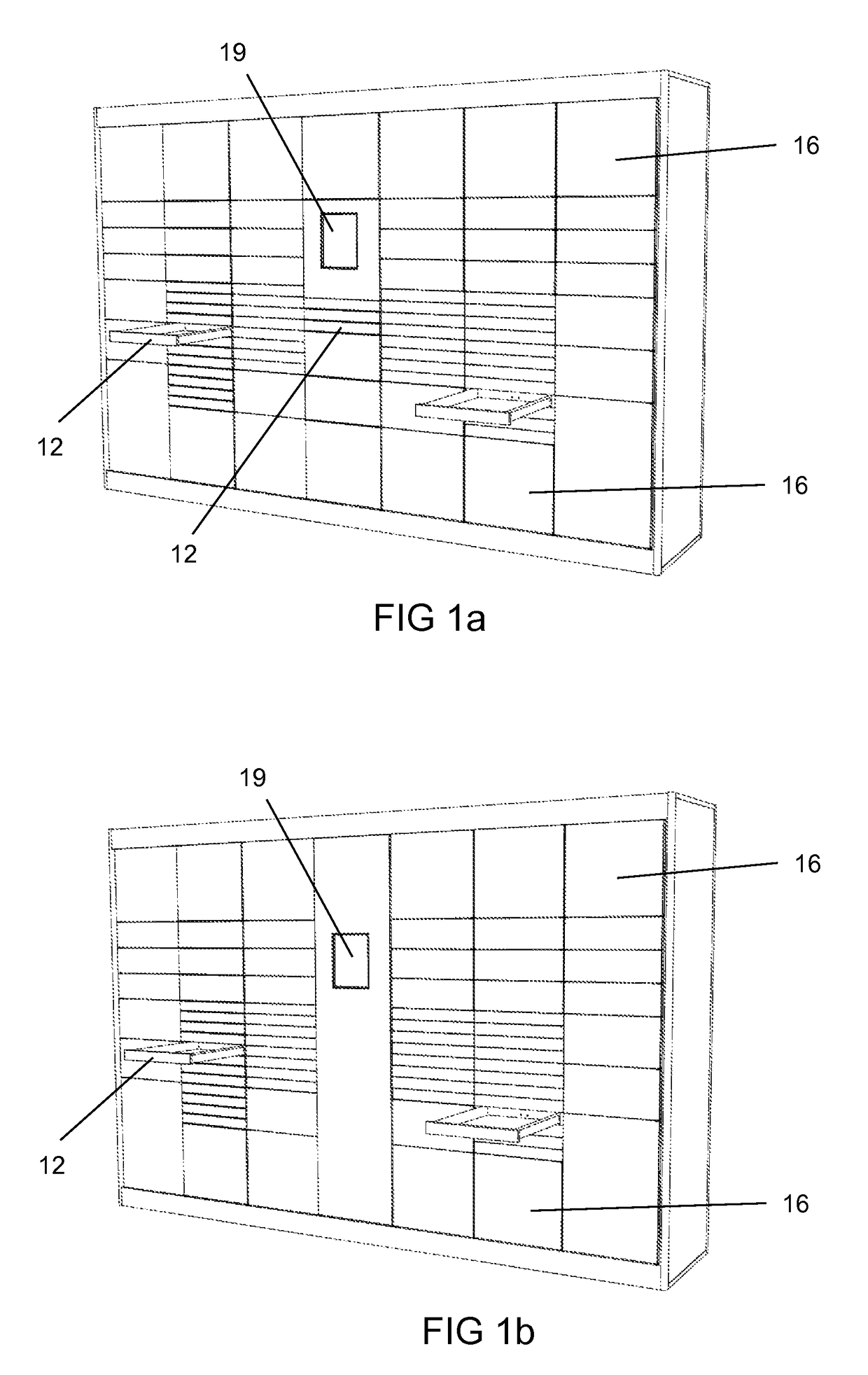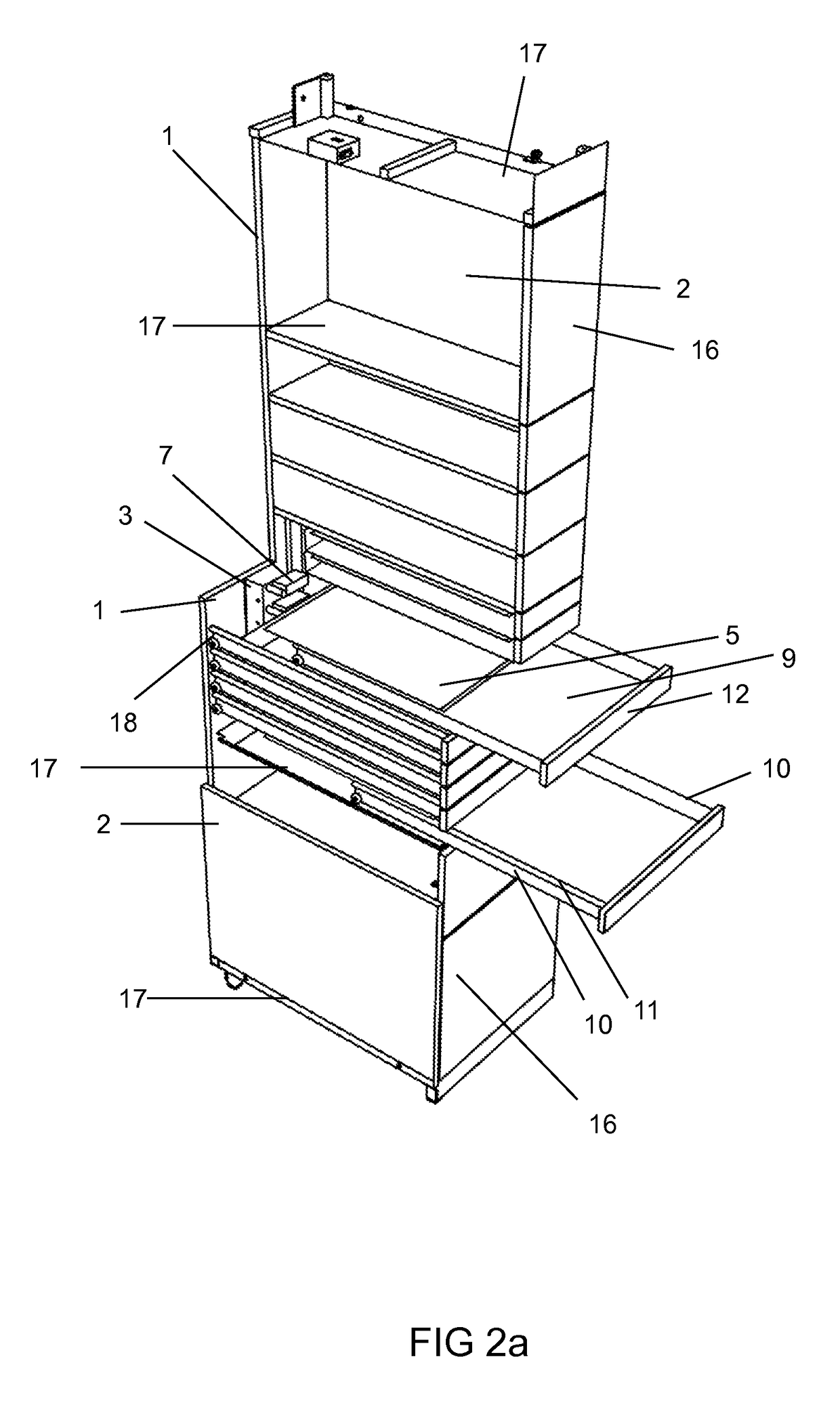Modular parcel terminal and method for sending parcels
a module and terminal technology, applied in the direction of casings/cabinets/drawers, instruments, casings/cabinets/drawers, etc., can solve the problems of high rental cost, too large terminals and space consumption, and high management cost, so as to optimize the usable space and manage high costs
- Summary
- Abstract
- Description
- Claims
- Application Information
AI Technical Summary
Benefits of technology
Problems solved by technology
Method used
Image
Examples
Embodiment Construction
[0033]The modular parcel terminal according to the present invention has been built from modules comprising outward moving open-topped compartments and compartments with doors 16 and a console module that comprises the electronics system 19.
[0034]The module of the modular parcel terminal according to the present invention comprises a rear panel 1, side walls 2, cable conduit 3, sections comprising compartments with doors 16 and moving compartments and comprises wires / cables, locking devices and hinges for doors 16, support wheels for rails 4, locking and moving mechanism 7 for moving compartments, locking system 8 preventing pulling out the compartment and electronics system 19 comprising cables, a computer, printer, camera, touchpad, screen or touch screen, scanner and / or other electronic devices for identifying the user, making payments and / or placing orders.
[0035]The outward moving compartment comprises a bottom 9, the edges of which have been bent into sides 10 and the edges of ...
PUM
 Login to View More
Login to View More Abstract
Description
Claims
Application Information
 Login to View More
Login to View More - R&D
- Intellectual Property
- Life Sciences
- Materials
- Tech Scout
- Unparalleled Data Quality
- Higher Quality Content
- 60% Fewer Hallucinations
Browse by: Latest US Patents, China's latest patents, Technical Efficacy Thesaurus, Application Domain, Technology Topic, Popular Technical Reports.
© 2025 PatSnap. All rights reserved.Legal|Privacy policy|Modern Slavery Act Transparency Statement|Sitemap|About US| Contact US: help@patsnap.com



